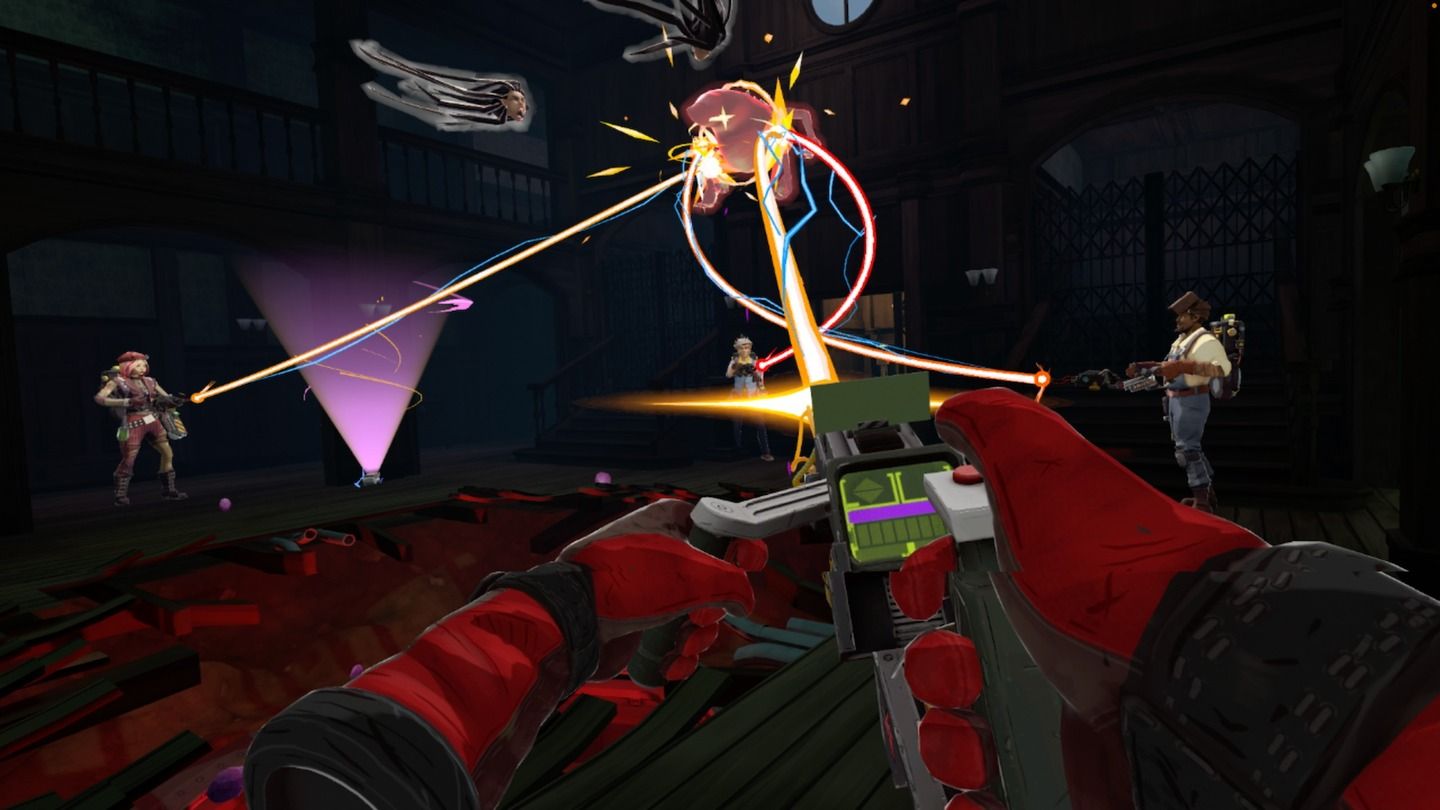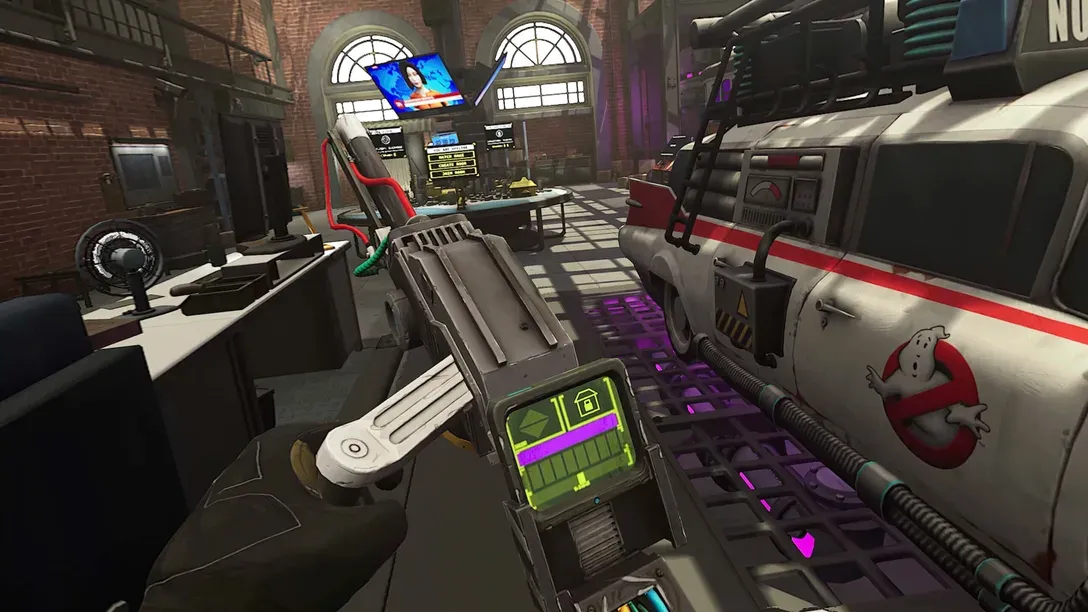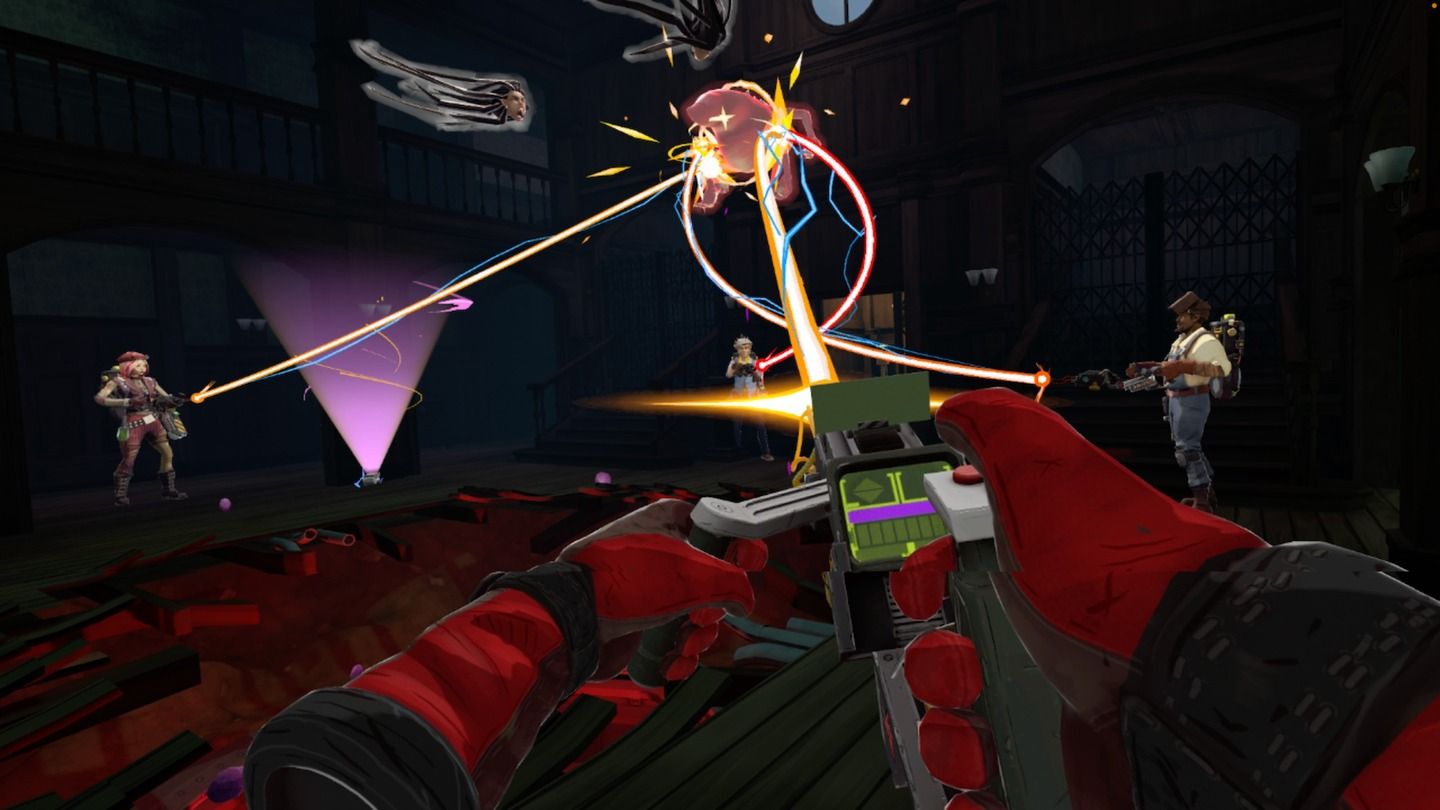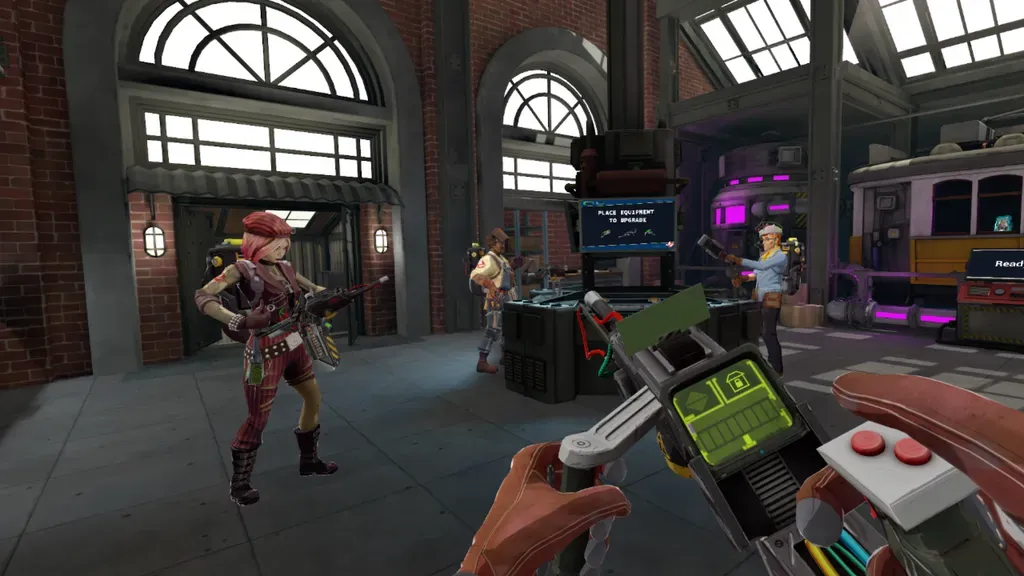
Ghostbusters: Rise of the Ghost Lord brings new co-operative multiplayer action to Quest and PSVR 2, but does it do enough to keep players coming back for more? Here’s our full review.
Heralding the start of a pre-holiday season game rush, Ghostbusters: Rise of the Ghost Lord has positioned itself as perhaps one of the most high-profile titles to release this year so far. It marks a potential sigh of relief for Quest 3 and PSVR 2 owners waiting for exciting new content, but also a rare partnership bringing together a huge multi-film intellectual property and one of VR’s most veteran development studios.
It’s a big bet from all angles, but does it pay off?
Platforms: PSVR 2, Quest headsets (Review conducted on Quest 3)
Release Date: Out now
Developer: nDreams
Price: $34.99
Ghostbusters has always been about team efforts, so it makes sense that Rise of the Ghost Lord revolves around co-op multiplayer. While it is possible to play through the game solo, the experience will be worse off for it – this is a game designed around playing with others online or, ideally, your friends.
There’s support for up to four players at one time with built-in audio chat and full cross-platform play between Quest and PSVR 2 from the get go, which is fantastic. There’s a room code system for playing with friends or a quick match option with online matchmaking to find one or more players to bust ghosts with.
A Ghostly Structure
The game begins with a solo intro sequence that does double duty as a tutorial and a set-up for the game’s loose narrative featuring the titular Ghost Lord villain. The game’s story is completely original, featuring very little tie-in to the existing movies beyond the core Ghostbusters premise.
Once the tutorial is over, you find yourself in the game’s lobby area, the San Francisco Ghostbusters HQ. It’s an original location that you’ll find yourself in before every missions, acting as a hub where you can upgrade gear, change skins and begin missions.
Mission order is dynamic, with players able to choose from a selection of three or more at any given time. Missions last around 10 minutes (give or take) and are split across four types, each with different objectives – Harvester, Giga Trap Retrieval, On the Clock and Exorcism.

Harvester missions involve repairing a large ghost-catching machine on the map and then using it to fill canisters with ghosts. On the Clock is a straightforward timed objective mode, requiring you to catch as many ghosts as you can within 10 minutes, while Exorcism sees your team locating objects on the map that will help close a ghost-ridden portal. Giga Trap Retrieval sees the team locating a Giga Trap and then getting one player to carry it across the map for extraction while fighting against ghosts. If a team member drops the trap and nobody picks it up again quick enough, the mission will fail.
The maps are set across San Francisco, including some iconic locations like Alcatraz and the Golden Gate Bridge. While not the most detailed environments ever, some nonetheless feature impressive scales, especially for a standalone headset like Quest.
After completing a set amount of missions, you’ll eventually get the option to take on a special mission to fight against the Ghost Lord. Though this technically rounds out the game’s loose narrative, the intent is clearly for players to continue playing afterwards, whether to unlock skins and upgrades or simply take on harder ‘Extreme’ difficulty versions of levels.
Ghost Hunters & Collectors
In terms of actual second-to-second gameplay, the ghost busting itself is fairly well-designed and features solid built-for-VR mechanics. Players are equipped a PKE meter (used to track objectives and scan the environment), a launch-able trap (for catching ghosts, of course) and a proton wand (to shoot out streams that vaporize ghosts). As you complete missions, your equipment can be upgraded with better stats and additional abilities.
The PKE meter and trap are located on your hip, with the main proton wand is over your shoulder. The latter shoots out the recognizable bendy stream of energy, which you’ll aim around the environment at ghosts.
Smaller ghosts don’t require traps and can just be vaporized, but larger one require a bit more teamwork and coordination. These ghosts have two deplete-able bars floating on each side of them – shields on the right and health on the left. Tracking them with your stream will wear down the shields, which then tethers the ghost to your stream. You’ll need to pull your proton wand in the opposite direction to the ghost’s movement to wear down its health. Doing this will also heat up your proton wand, requiring you to press the A button right at the peak to vent it. If not, your wand will overheat and temporarily shut down.

Once its health has been depleted, you can pull it into a nearby trap or harvester. Overall, it’s a clever system that takes good advantage of motion controls and rewards efficient communication between teammates.
Ghosts will also attack you through all of this as well though. Some get up close while other shoot projectiles from afar. You’ll need to keep moving to evade attacks – a system which largely benefits those playing with smooth locomotion, though teleportation is also available. If downed, you’ll need to high five a team member to be revived. The mission fails if all players are downed at once.
Busting The Gameplay Loop
On paper, this sounds like a good foundation on which to build a replayable, live service game that could retain player interest long after release and onward through new content drops. However, what’s on offer here likely won’t have that level of staying power.
There is a lot of repetition in Ghostbusters: Rise of the Ghost Lord.
It’s not so much that there isn’t variety, because there is – you can choose from multiple maps, there’s different missions types and you’ll encounter different varieties of ghosts as you play.
The problem is that it’s simply not enough to stay fresh beyond the first few hours. Once you’ve done everything once, you will be doing it again. Maps repeat themselves frequently. The mission objectives play out the same each time. Ghosts frequently reappear across the game, all defeated in roughly the same way.

Before long, it all starts to blend into one. Elements that felt unique soon become laborious. There’s few stand-out moments in the gameplay and everything quickly becomes rote. Though the final boss battle against the Ghost Lord has some unique and epic moments, it also features appearances from the same set of ghosts you’ve grown sick of fighting across the other missions.
Just under week post-launch, many of the players I spoke with in-game had already played missions several times over and were completing them again just to unlock more skins or upgrades. When loading a run of the final Ghost Lord mission with another player online, I asked if he had completed it already. “Oh, like five times,” he responded, with a sense of resignation.
There’s also a lack of depth to most missions. Getting downed often feels disorientating and unfair, but is then paired with a very lax revival system. Ghosts have different types of attacks, but none require much more strategy than evasion via constant movement. Even the ‘Extreme’ missions, designed for long-term replayability, just seem to amount to more ghosts per area requiring extra damage to be taken down.
Fun With Friends
That’s not to say the game is devoid of anything enjoyable – there’s an initial novelty to the gameplay that lasts a little while before wearing off. Who you’re playing with also makes a big difference – if you’re enjoying the company of your teammates, it goes a long way to staving off the repetition. I had some online sessions with friendly players that made the missions more enjoyable. I also had some sessions with muted players that made the repetition all the more grueling.
I did also encounter a variety of bugs during my playthrough – not enough to ruin the experience or stop me from playing, but frequent enough to be noticeable. There was once instance where the mission select buttons wouldn’t work for the lobby host, for example, or another point where me and a teammate got stuck on the mission complete scene. After one mission, ghost attack effects continued to appear around me and another player as we returned to the lobby.
Alongside bugs, I often noticed glitch-y, pixel-sized visual artifacts flash on screen for a few frames at various points while playing on Quest 3. There were also occasional frame judders on Quest, even during less demanding sequences. Though the vast majority of my playthrough was on Quest, a quick test of the PSVR 2 version seemed to indicate solid performance and a noticeably higher level of visual detail, alongside improved lighting and shadows.
Mini-Puft Mayhem Mixed Reality Mode
On Quest, Rise of the Ghost Lord also includes a mixed reality mini game that breaks open your ceiling to reveal a giant Stay Puft Marshmallow Man.
You’ll use a cannon-slingshot device (with fairly wonky controls) to suck up floating mini-pufts and bombs that can be shot at the giant Marshmallow Man above you. One round won’t take you more than five minutes to complete.
I’d say you’re likely to play through Mini-Puft Mayhem once and then never again, but that might encourage you to give it a try – I’m not sure it’s even worth that. It amounts to a fairly uninspired mixed reality experience that will look great in a Quest 3 commercial but offers little of substance to players.
Ghostbusters: Rise of the Ghost Lord Review – Final Verdict
Sony Pictures VR and nDreams built a solid foundation for a decent co-op multiplayer experience with Ghostbusters: Rise of the Ghost Lord, featuring a VR-first approach to combat and an engaging overall presentation.
Where Rise of the Ghost Lord falls flat is in its repetitiveness, which quickly makes itself apparent and will likely rob the game of becoming a live service staple to come back to over time, even with additional content promised. It’s easy to see players enjoying the first few hours with friends – it’s harder to see them coming back for more afterwards.
After his fifth run through of the game’s ‘final’ Ghost Lord mission in under a week since launch, my fellow ghost buster summed it up pretty well as we stood in front of the post-mission summary screen. “Well, I think I’m gonna go play another game now.” You know what? Me too.

UploadVR uses a 5-Star rating system for our game reviews – you can read a breakdown of each star rating in our review guidelines.


